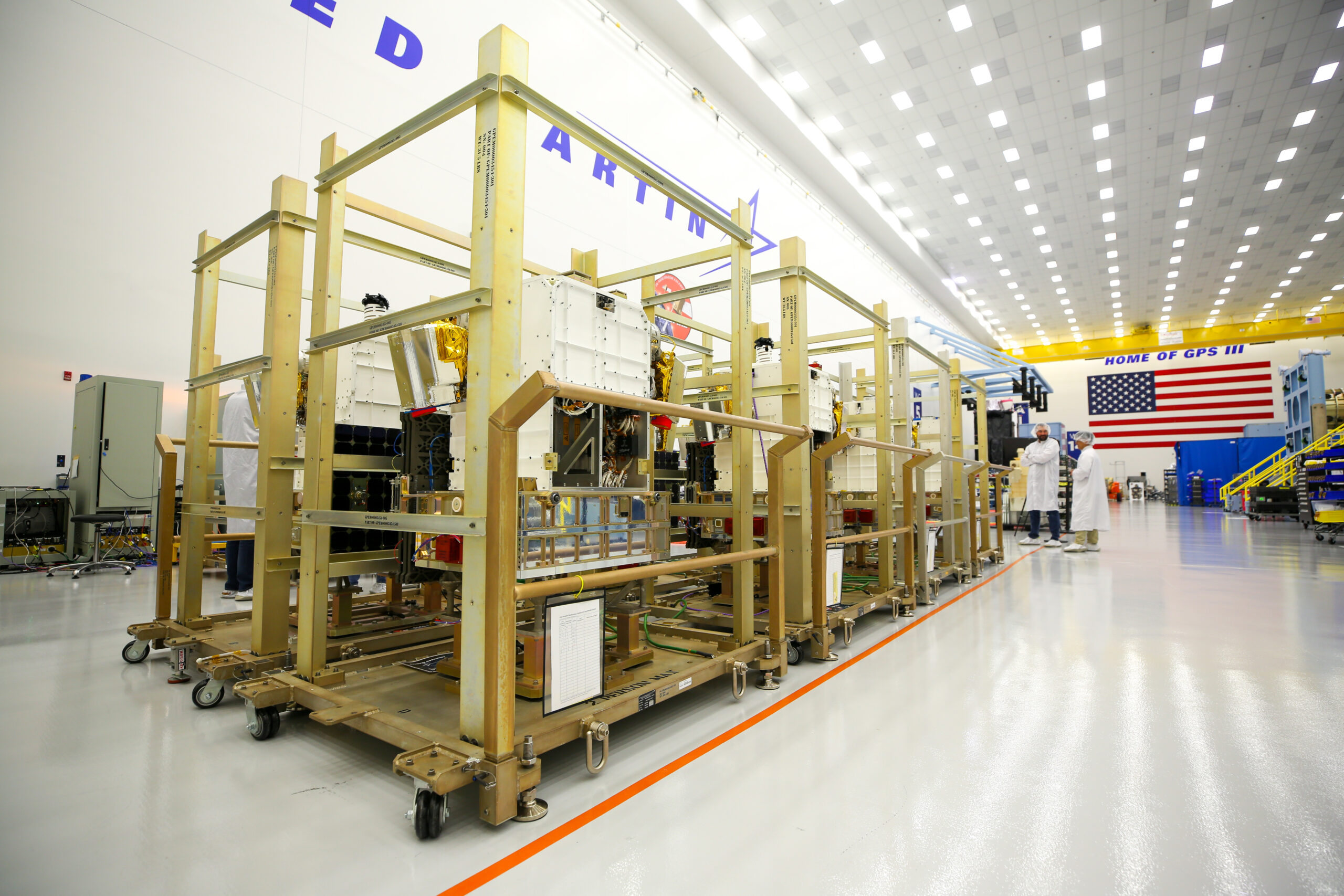WASHINGTON — With its first 23 satellites in orbit, the U.S. Space Development Agency in the coming months will begin the demonstration phase of a data network in space designed to support military operations.
SpaceX on Sept. 2 launched SDA’s second batch of satellites. The agency now has 19 communications satellites and four missile-tracking spacecraft in orbit. These make up the Tranche 0 portion of a projected network known as the Proliferated Warfighter Space Architecture.
“While the launch is very exciting news, it’s what we will demonstrate on orbit that really matters — the ability to provide the warfighter with tactical data links, beyond line of sight targeting, and the missile warning/missile tracking of advanced missiles,” SDA’s director Derek Tournear said in a statement following the second launch of Tranche 0 satellites.
Two key goals for SDA will be to test the radio and optical communication payloads on the satellites that will make up the Transport Layer, an internet in space intended to move data from satellite to satellite, and provide links to military systems on the ground, at sea and in flight, so they can get data with minimum delay.
“For the first time we’re going to demonstrate tactical data links from space,” Mike Eppolito, SDA’s program director for Tranche 0, told reporters Aug. 29.
SDA’s satellites will be the space nodes of the military’s Link 16 network. This is a crucial requirement for the Transport Layer because all major U.S. military and NATO platforms are part of the Link 16 network — an encrypted tactical data protocol used to connect aircraft, ships, and ground vehicles so they can exchange data, including text, voice messages and imagery.
Link 16 today is a line-of-sight network, and extending it into space would provide beyond line-of-sight connectivity.
Of the 19 Transport Layer satellites now in orbit — 10 made by Lockheed Martin and nine made by York Space Systems — seven have Link 16 payloads. The remainder have S-band and Ka-band radios. All 19 satellites have two optical terminals each.
Tests on hold due to licensing delays
SDA had planned to start testing this summer the Link 16 payloads on York’s satellites launched in April.
But tests are on hold pending frequency licensing approval from the National Telecommunications and Information Administration. SDA also needs authorization from the Federal Aviation Administration to transmit Link 16 signals in national airspace over a test site at Eglin Air Force Base, Florida.
The FAA has to ensure, for example, that Link 16 transmissions will not interfere with air traffic control radars.
“The most notable milestone that we’re looking to hit near term is checking out the link 16 payloads,” Eppolito said, “We have some outstanding policy issues that are holding that up. As soon as we get approval, we plan to move forward with that checkout.”
These delays were expected, he said. “Whenever you’re demonstrating new technology, there’s always going to be policy hurdles.”
Eppolito pointed out that the eight York satellites launched in April have yet to start orbit-raising maneuvers, but that is not due to any performance issues.
“There’s been a lot of questions about propulsion issues because we haven’t orbit-raised those satellites,” he said. “It was always our intent to get them on orbit, demonstrate everything at the insertion orbit and orbit-raise them later.”
Lockheed Martin has a lot of experience working with Link 16 but operating that network in space comes with new challenges, said Joe Rickers, Lockheed Martin’s vice president for protected communications.
“It comes down to getting a space-qualified product,” he said.
Rickers said introducing a terrestrial-proven network in space brings significant improvements as it will “enable sensor-to-shooter targeting by connecting systems that include fighter aircraft and integrated air and missile defense networks.”

To ensure SDA satellites from different vendors can communicate, the agency requires the use of optical terminals that comply with specified networking and communications standards.
“Optically linked satellites is something that the commercial industry has done for a little bit of time now,” said SDA spokesperson Jennifer Elzea. “But it’s not something that the military has heavily relied upon because the market didn’t really support it until recently.”
For DoD, the concept of a proliferated low Earth orbit constellation is new, she said. “So that’s something that SDA is demonstrating.”
With regard to missile-tracking satellites, SDA in June reported that it received initial images from the first two infrared sensor satellites built by SpaceX that launched in April. Two additional SpaceX satellites launched Sept. 2.
There are four more Tranche 0 missile-tracking satellites made by L3Harris that are projected to launch on a U.S. Space Force-Missile Defense Agency mission later this year.
One Tranche 0 Transport Layer satellite made by York Space remains on the ground to serve as a software testbed.
While Tranche 0 is a demonstration network, Tranche 1 will be the first operational portion of SDA’s proliferated constellation. Tranche 1 will include approximately 150 Transport and Tracking satellites, and are projected to launch in late 2024 and 2025.
